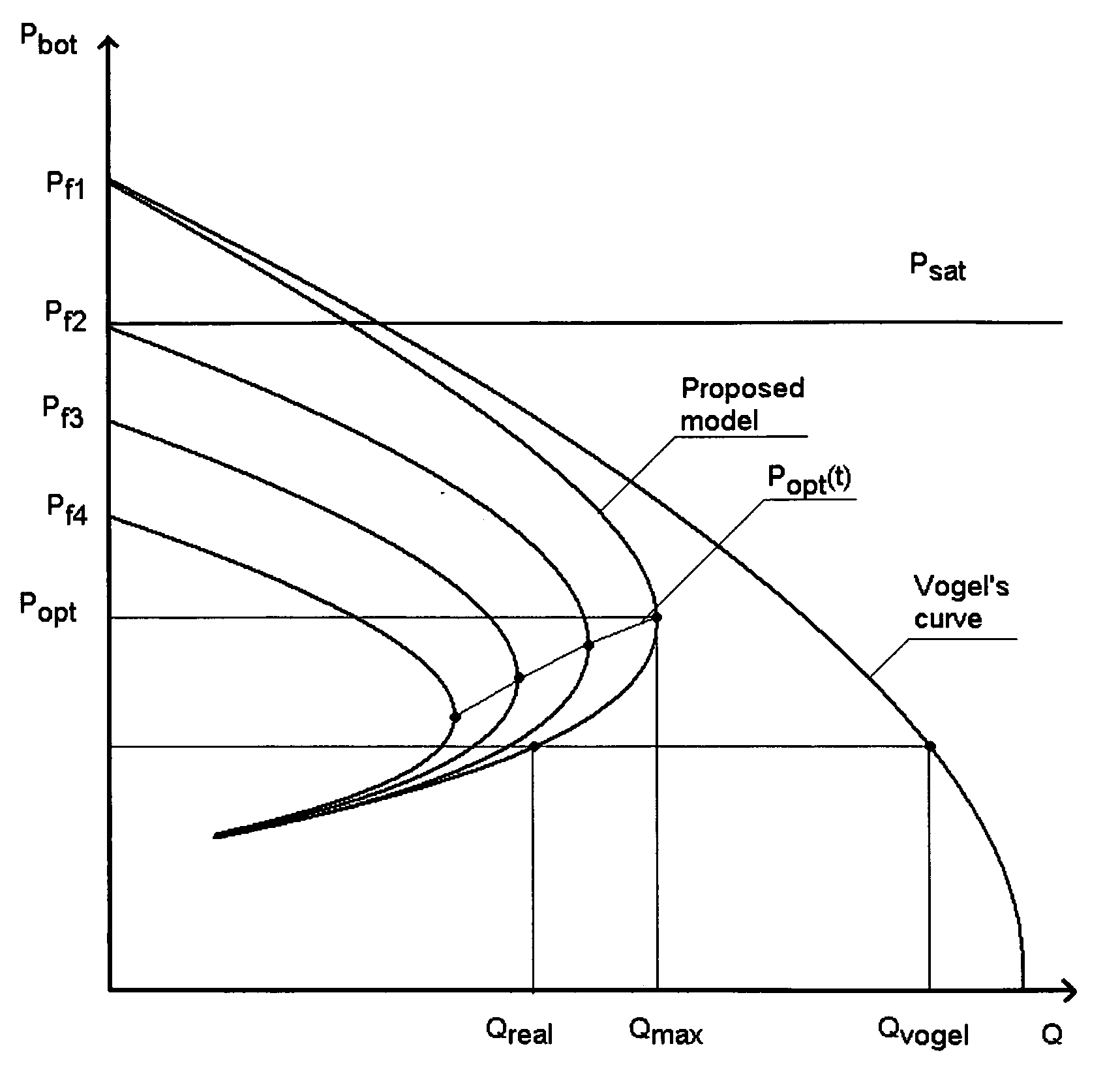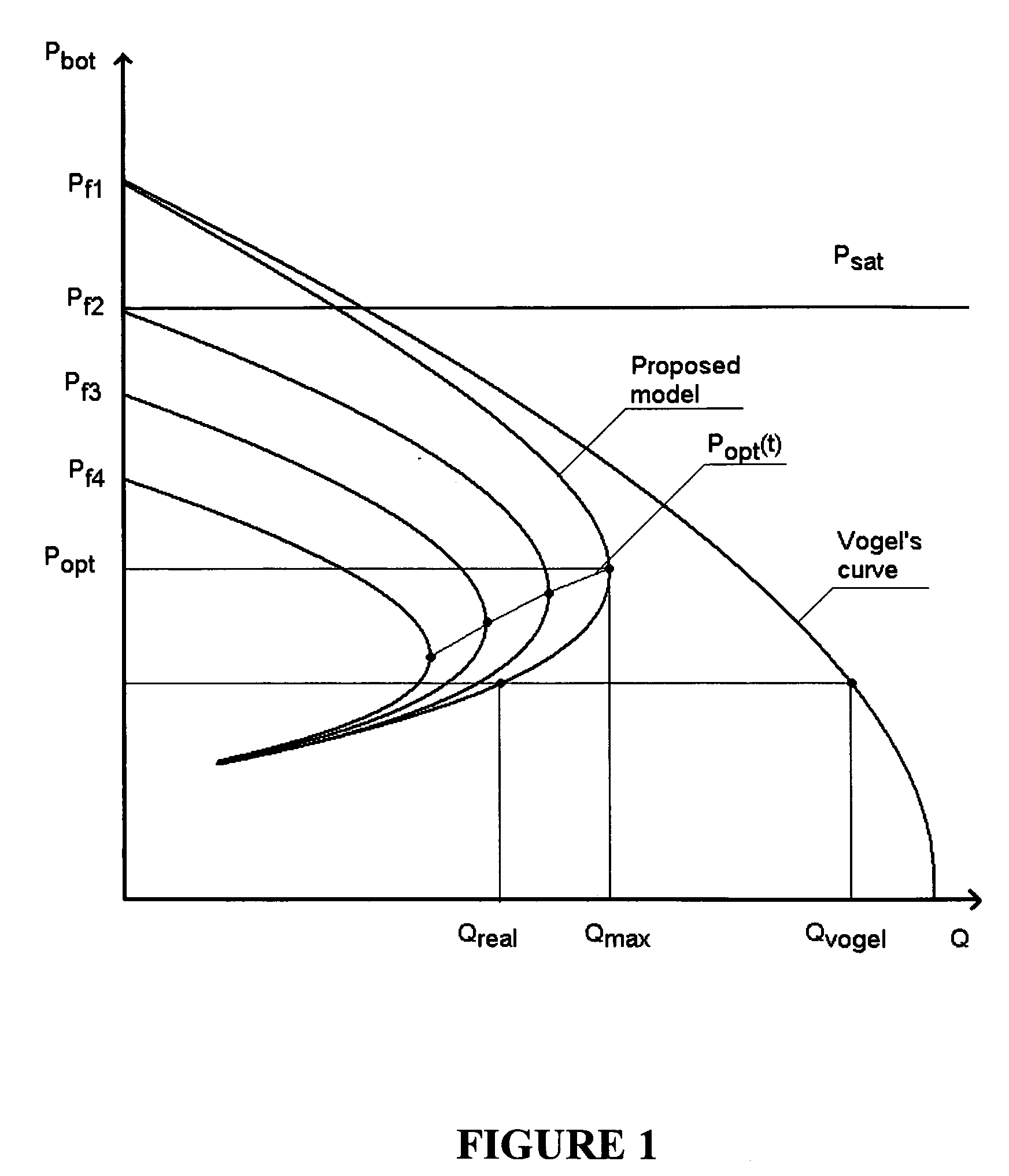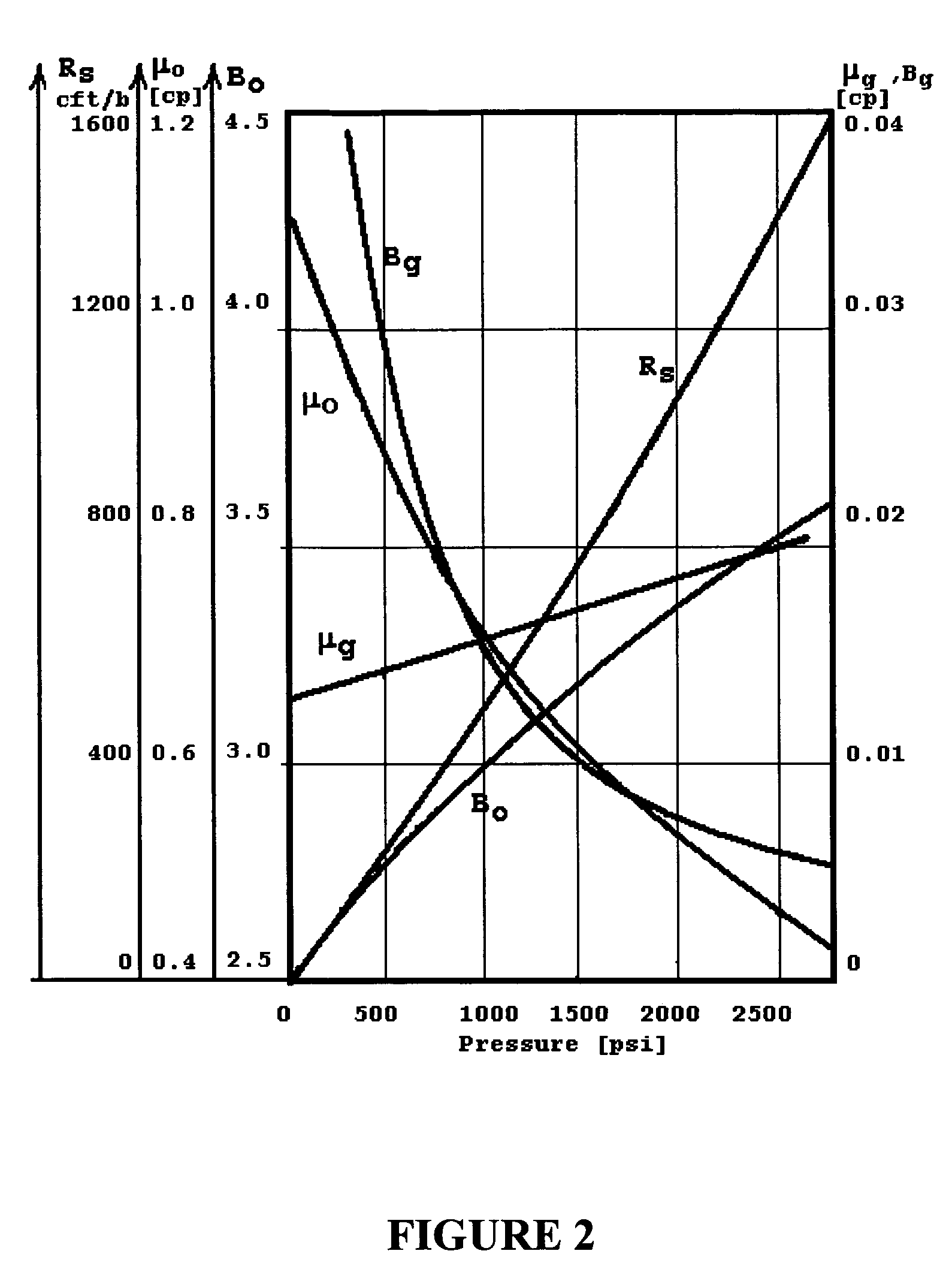Oil production optimization and enhanced recovery method and apparatus for oil fields with high gas-to-oil ratio
a technology of oil production optimization and enhanced recovery, which is applied in the direction of fluid removal, borehole/well accessories, surveillance, etc., can solve the problems of reducing the production index, reducing the productivity index of formation, and not working well with the vogel model in the well with high gas-to-oil ratio, so as to maximize the oil production and operating life of the well, optimize and maximize the production of oil, and achieve high gor
- Summary
- Abstract
- Description
- Claims
- Application Information
AI Technical Summary
Benefits of technology
Problems solved by technology
Method used
Image
Examples
case iii
[0070] The resulting three cases of solution are shown on FIG. 6: [0071] Case I—the case when bottomhole pressure was kept throughout the life of the well at a non-optimal level of Pbot(t)=0.25.Pf(t); [0072] Case II—the case when bottomhole pressure was kept throughout the life of the well at an optimum level of Pbot(t)=Pbotopt(t); and [0073] the case when at first for approximately 120 days the well worked according to scenario as in case I, and then it was switched to scenario as in case II.
[0074] Behaviors of oil rate (Qoil), formation pressure (Pf), and GOR, in dependence of current recovery index (N) are shown on FIG. 6 as predicted by using the calculations according to the method of the present invention. In case I, the well worked for approximately 990 days before the oil rate fell to 6 bar / day, the limit of production sensibility. By that time, the well gave approximately 4.25% of the ultimate recovery index. In the second case, the well worked for 1440 days (4 years), and...
PUM
 Login to View More
Login to View More Abstract
Description
Claims
Application Information
 Login to View More
Login to View More - R&D
- Intellectual Property
- Life Sciences
- Materials
- Tech Scout
- Unparalleled Data Quality
- Higher Quality Content
- 60% Fewer Hallucinations
Browse by: Latest US Patents, China's latest patents, Technical Efficacy Thesaurus, Application Domain, Technology Topic, Popular Technical Reports.
© 2025 PatSnap. All rights reserved.Legal|Privacy policy|Modern Slavery Act Transparency Statement|Sitemap|About US| Contact US: help@patsnap.com



